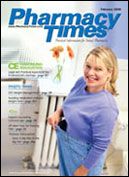Publication
Article
Pharmacy Times
compounding HOTLINE
Author(s):
Mr. Erickson is director of professional affairs at Gallipot Inc.

Where can I obtain powdered food coloring foruse in compounding?

Food coloring as a descriptive class is notapproved for use in pharmaceutical compounding;however, drug and cosmetic (D&C) and food, drug,and cosmetic (FD&C) dyes are allowed. Colorants are uniquecompounds from a legislative and regulatory standpoint:most countries maintain positive lists of colorants suitablefor use in food, drugs, cosmetics, or in more than 1 of theseclasses.
Following are several examples of FD&C colorantsapproved for use in the United States. Please note: Wherethe words Alum Lake are used, the dye is insoluble; in compoundedpreparations it is used most often as an excipientin capsule formulations as a visual aid to verify uniformity.The other dyes are water-soluble. Either type can be used tomake a preparation more appealing to the patient and henceimprove adherence.
Examples of Approved Colorants
- FD&C Blue #1 (Brilliant Blue FCF) Alum Lake
- FD&C Blue #1 CI 42090
- FD&C Blue #2 (Indigotine) CI 73015
- FD&C Green #3 (Fast Green FCF) CI 42053
- FD&C Red #3 (erythrosine) CI 45430
- FD&C Yellow #5 Alum Lake
- FD&C Yellow #5 (tartrazine*) CI 19140
- FD&C Yellow #6 (Sunset Yellow FCF) Alum Lake (looks orange)
- FD&C Yellow #6 CI 15985 (looks orange)
*Tartrazine-containing prescription drugs for human use are required to bearthe statement: "This product contains FD&C Yellow #5 (tartrazine) which maycause allergic-type reactions (including bronchial asthma) in certain susceptiblepersons."
The incidence of this sensitivity in the general population is low, but aspirin-sensitivepatients seem most likely to exhibit tartrazine hypersensitivity.
E-mail your compounding questions to linkEmail('compounding','PharmacyTimes.com').







